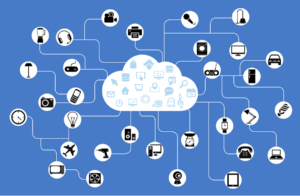With the increase of connected technologies, it has become easier to integrate technology into our lives in simpler ways. Smartphones and voice assistants allow us to type reminders or make calendar appointments with ease, while smart TVs can provide wider entertainment options if connected. As convenient as these gadgets are in making life easier, their widespread use brings with it a looming security threat.
Cybercriminals can exploit them as an attack method if they are left unsecured and unprotected, so it’s important for users to take certain precautions and know how to secure these devices properly. Users should review relevant help guides for each device. Taking these steps ensures that we can enjoy the conveniences of modern technology without compromising our safety or privacy.
How Do I Make My Smart Home Device Secure?
Think for a moment about how you secure the devices which connect to the internet. Probably. the answer will be no. Thus, you become vulnerable to various manipulations by cyber criminals. Here’s how can you keep a network secure.
1. Secure Wi-Fi Router
Securing your Wi-Fi router should be one of your top priorities when making sure your Internet connection is safe and secure. Unfortunately, many people don’t realize that using the default settings with their router can pose serious security risks. To protect yourself, you should change both the password used to connect to your router, as well as the password used to access its settings. Try to use the highest security setting (usually WPA2 but newer routers may offer WPA3) and if you can use all of your connected devices with it as well. Another important step is keeping your router updated with the latest firmware whenever possible—while many routers will automatically do this for you, double-checking can help ensure you are not putting yourself at risk unknowingly.
2. Encrypt Web Traffic
VPNs are able to provide users with secure and encrypted traffic between their Fire TV device and the internet, allowing them to keep all their data private regardless of where they are in the world. One of the best Fire TV VPN applications is VeePN – with it, you can simply connect your Fire TV device to it and start enjoying a secure web connection. Just keep your data private and you won’t run into scammers and hackers. VPN apps also come in handy when you need to access content from services that may be blocked due to geographical restrictions, as well as for surfing websites without leaving any traces behind. So if you’re looking for ways to further protect yourself and your data against hackers, encrypting your web traffic using Fire TV VPN is an ideal solution!
3. Software Update
In the connected world, secure IoT devices are essential. Manufacturers and software providers regularly issue product updates as a way of keeping customers secure and up-to-date with their security features. These product updates often include new features or adjustments to the interface, but they are also primarily used to ensure secure connections. For example, these updates can close known security vulnerabilities so that your devices remain secure from malicious attacks. While many users may not check for product updates frequently, it is important to stay on top of the latest available versions – especially when it comes to network infrastructure.
4. Check Device Data Collection
In today’s world, the security of IoT devices is more important than ever. We generate and transact data online which has a high value if it falls into the wrong hands. As a result, individuals must be aware of the data their connected devices collect, how it is stored, and how it is shared with others. This awareness is especially important in order to prevent criminals from taking advantage of vulnerable IoT devices such as home security systems or heating systems. For example, if someone were to gain access to a log that isn’t stored securely, they could easily tell when the house is unoccupied due to changes in temperature and security settings. It is vitally important that users take security measures seriously in order to protect private data and prevent criminal activity.
5. Use Strong Passwords
A good password is your first line of defense against cyber threats, so it’s imperative to ensure that all of your passwords are strong and secure. With the growing number of IoT devices these days, it’s critical to create a unique login ID and super-strong password for each of them. If the password to one device gets compromised, then having unique passwords for every account gives you an edge in keeping the others safe. Keeping track of all those passwords can be a challenge though; jotting them down on paper is not the wisest option, after all. Instead, using a password management tool offers superior protection as well as convenience when using different passwords for various accounts.
6. Disable Features You Don’t Use
While staying connected with the IoT has become increasingly common, it is important to take extra measures to protect these devices. One key step is to disable features that are not used. Smart TVs may offer voice control, but if a family does not use this feature, it should be turned off to avoid potential entry points for hackers. Similarly, remote access for devices and Bluetooth connectivity for speakers also have no purpose when confined to a home Wi-Fi network. These safety precautions may seem overly protective, but it’s essential to close any open doors that could give malicious actors access to information or conversations. Taking the time to identify and turn off unnecessary functionality is an essential safeguard in protecting your IoT appliances.
7. Enable 2FA
Internet-connected devices are becoming increasingly common these days and with the convenience comes an increased risk of security breaches. One way to ensure that your internet-connected device remains secure is through multi-factor authentication, or Two Factor Authentication (2FA). 2FA requires users to provide additional proof of identity with every login attempt which can come in the form of a one-time pin (OTP) or verification code sent directly to your phone or email address. Most internet-connected devices will have multi-factor authentication as part of the default set up but there are some that don’t.
Conclusion
The security of IoT devices should be taken seriously, as it is essential to keep your valuable data and privacy safe. By following these tips, you’ll ensure that your IoT devices are secure and you can take advantage of all the convenience they have to offer. Be sure to monitor your devices regularly for any suspicious activity and always stay on top of security.


